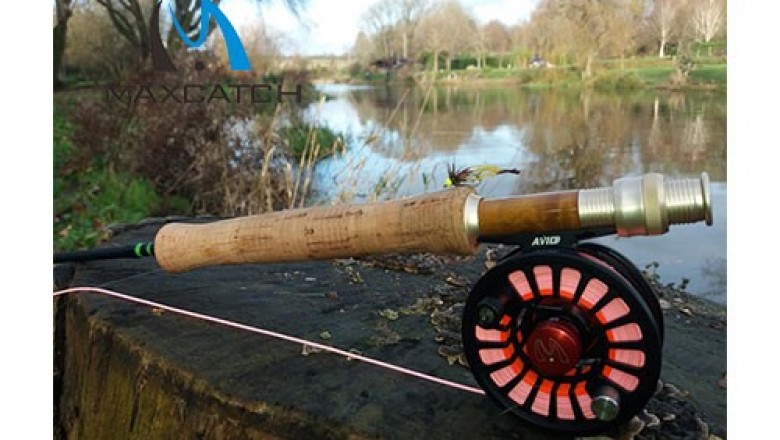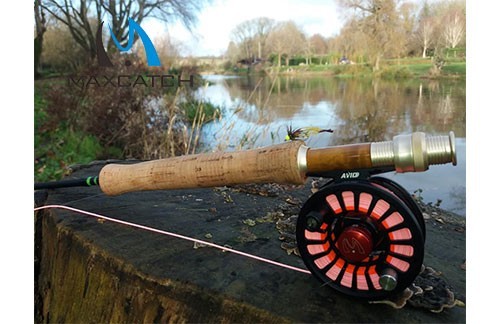views

What is Fly Fishing?
Fly fishing is an alternative method to traditional fishing where an artificial fly is cast using lightweight luring techniques to catch fish in either fresh or saltwater. The artificial flies are cast with a specialized fly rod and a plastic-coated fly line. There are many types of artificial flies king different creatures such as baitfish and insects. The bait can be made to sink or float making it where the angler can switch their strategy using the same fly-fishing rod.
Fly fishing can be used to catch various species of fish ranging from graylings to panfish to marine species such as bonefish and striped bass to even predatory saltwater creatures including wahoo and sharks. The obvious key to fly fishing is the food source of the creatures that are targeted.
The history of fly fishing has evidence dating back to over 2,000 years ago where Marcus Martialis writes about fish "decoyed and killed by fraud flies." Claudius Aelianus of the 2nd century is often revered to being the angler with the earliest and consistent use of this method. In the early days of fishing, primitive hand lines were used in lieu of fishing rods. As time progressed, angler methods evolved. In 13th century England, the fly was a hook tied with feathers used to catch freshwater fish.
Later on, fly fishing would be common to Japan's lower class. Unlike previous uses consisting of strictly hunting and gathering or to trade, the Bushi were instructed to fly fish in order to train their minds in peacetime. These artificial flies were made with bent needles and the fly fishing rods were longer than traditional ones.
In the 1700s, running rings were developed which gave fishermen more control over casting lines. The rods themselves became more sturdy, constructed with stronger materials such as bamboo to add flexibility. This time period also saw the commercialization of the industry when Onesimus Ustonson was established as the official supplier for several monarchs in England.
The Industrial Revolution further helped commercialize the craft with textile spinning machines that were used in lieu of manual line-twisting. This further progressed the industry and the use of fly fishing for recreation grew in 19th century Britain with the creation of fly fishing clubs.
England takes credit for the further advancement of this industry with their modern reel design known as the "Nottingham reel." This design gained popularity in the United States where additional modifications were added to the existing models. Longer rods and light lines allowed the angler to rely upon the wind to successfully catch a fish. Newer lines were then allowed to be developed with silk, increasing the casting distance.
With longer lines, the problem of entanglement became an issue for many anglers. Out of this concern, came the invention of a regulator to evenly spool the fishing line which prevented "backlash." Further advancements combatting this issue came about in Albert Illingworth's patented reel design. With Illingworth's design, the fishing line was not bound to pull against a rotating spool so lighter lures would be able to be cast in comparison to traditional reels.
From being used by peasants in 17th century Japan, the 19th century expanded fly-fishing to the upper classes of Southern England. Dry-fly fishing was one of the main methods for wealthy Englishmen to fish the calmer waters of the area. The weeds that were in close proximity to the surface caused the need for further developments in techniques that would keep the artificial fly on the surface of the water. This became the breakthrough that spurred advancements in the dry-fly fishing method.
Despite the advancements of dry-fly fishing, Great Britain as a whole favored the wet-fly fishing method as a vast majority of the regions were vastly different than the Southern England landscape. With the United States being so diverse in terms of land structure, attitudes for both fly-fishing methods were adopted equally. Theodore Gordon was known for fly tackling to capture the trouts of the mountains. In America, this sport would also gain popularity as it did in England.
The sport of fly fishing had gained popularity in Australia around the late 19th century to the early 20th century. This gave the youth of Australia a masculine pastime to engage in the form of a new and exciting sport. The manufacturing of inexpensive materials used in fly fishing rods and lines spurred another boom in popularity for the sport in the 1950s. In modern times, movies and fishing television channels keep the craft in the mainstream of the fishing world originating from its earliest use as an alternative method of fishing and constantly building off of previous advancements made in the industry.
Fly fishing faces new challenges in today's age of increasing water pollution and climate change. Many species of fish have fled to the ocean, leaving the rivers behind due to the rising amounts of harmful chemicals impacting their native biome. One cannot fly fish if there are no fish to catch. Saving the many species of fish impacted by this pollution and taking care of the environments are keys to protecting the future of this industry.
Man-made dams are also preventing anadromous fish from getting to their spawning grounds when trying to get back from the sea. The removal of dams may be out of the question in some cases so the building of fish ladders has helped the species bypass these dams and return back to their native birthplaces.
Fly fishing has made tremendous strides since its inception over two millennia ago. The craft has evolved from a trade to a sport. In order to keep this industry alive, one has to be aware and proactive in protecting the environments in which these creatures dwell. We must also build on the work of the pioneers of this craft and continue to look for further methods of advancement. Technology is changing continuously. We must use this technology to combat these uncertainties plaguing this industry in order to secure a future for fly fishing.













